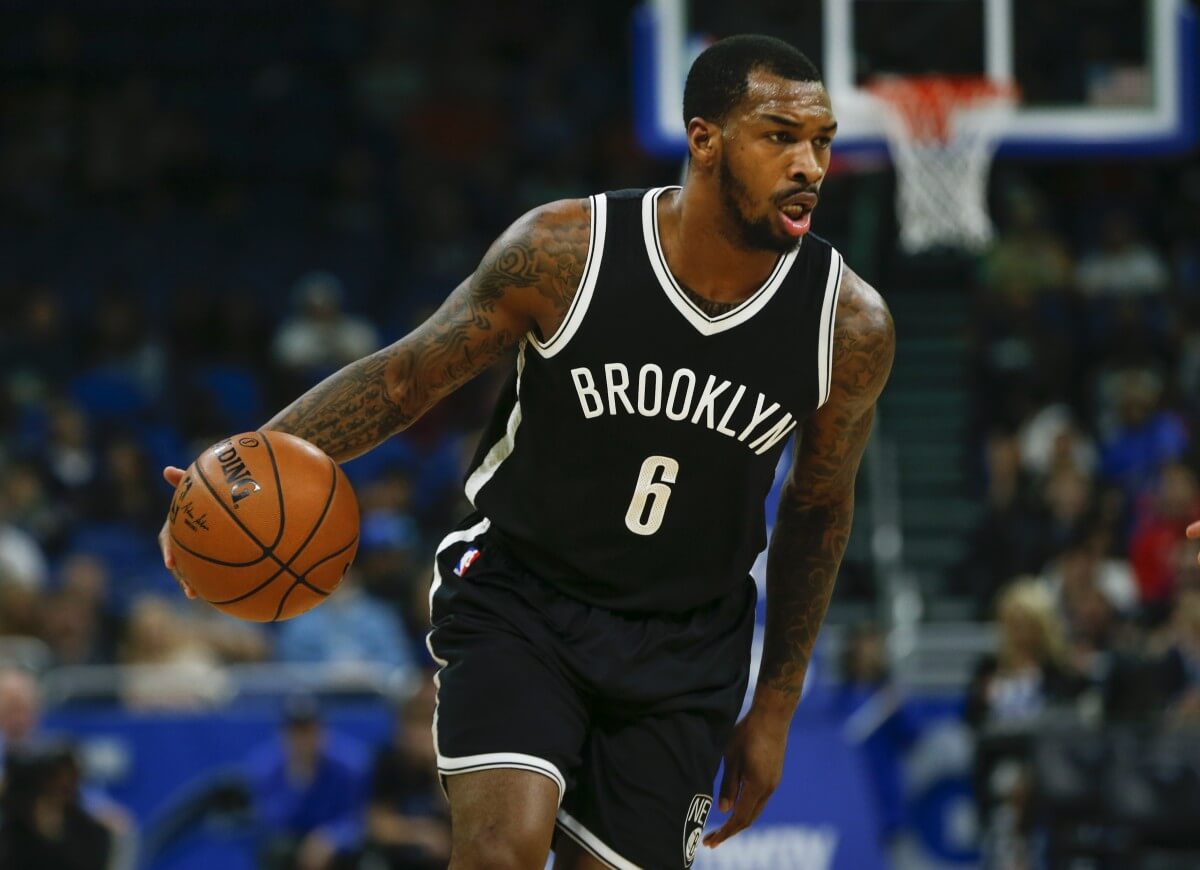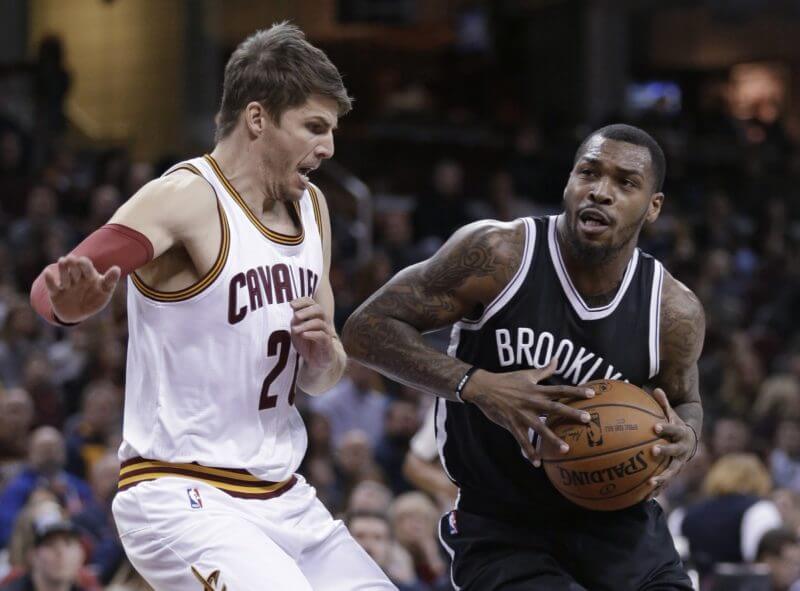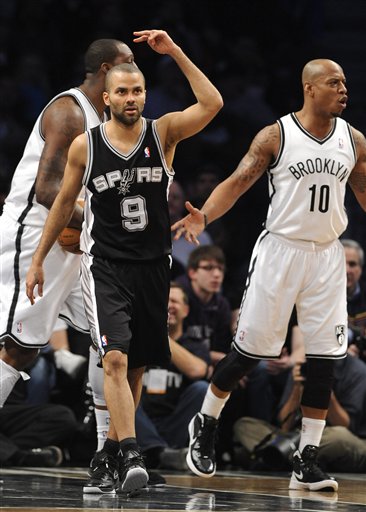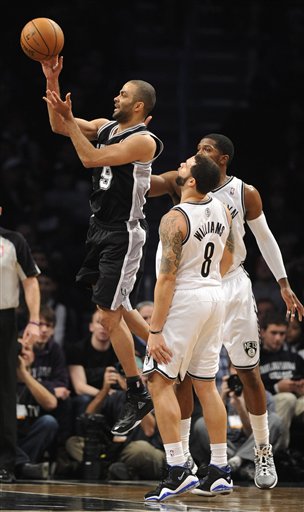
Sean Kilpatrick, Shooting Guard
2016-17: 25.1 MPG, 13.1 PPG, .415 FG%, 4 RPG, 2.2 APG, 0.6 SPG, 0.1 BPG, 1.9 TOV, 70 G
Who is Sean Kilpatrick?
Basically, Kilpatrick is a motivational quote come to life. Kilpatrick is one of the most inspiring Instagram follows out there and for good reason. He’s the perfect 10-day contract success story: from the rollercoaster of G League 10-day contract guy to guaranteed NBA contract guy playing an important role for a real-life NBA team.
Kilpatrick is the undersized grinder who made it to the Brooklyn Nets via a couple of cups of coffee with the Denver Nuggets and Minnesota Timberwolves and stints in the G League. The Nets plucked the undrafted four-year Cincinnati product from the ‘minors’ while Kilpatrick was leading that league in scoring and, after showing enough after the maximum two 10-day contracts, signed him to a three-year minimum deal.
Also, he hangs out with Kevin Durant in the offseason:
https://www.instagram.com/p/BX9X1gwgpaT/
Steve Nash was even there.
https://www.instagram.com/p/BXrMepMgcGf/
Nice.
Anyway. Kilpatrick is the sort of player Sean Marks has spent the last 18 months hanging his hat on, the semi-precious stones in the rough (they are not quite gems, let alone diamonds) that Marks has had to try and unearth thanks to the dearth of talent on the Nets roster.
Kilpatrick, though, is also emblematic of that approach: what you get is an unarguably talented basketball player, but one who struggles with consistency and has holes in his game that limit his overall effectiveness.
On the whole, however, Kilpatrick has proven an effective NBA scorer — he averaged 20.6 points per game in his senior year at Cincy, a role he’ll be asked to hone and expand this year. He’s a solid three-point shooter, and the vast majority of his game is focused on Atkinson’s Morey-ball-lite approach of threes and layups.
One underrated aspect to Kilpatrick is his size – he might be slightly under-sized height-wise at 6 feet, 4 inches, but he is well-built, burly and strong, which helps his forays to the rim (more on that later).
2016-17 Recap
One of the single best highlights of the 2016-17 Nets season was this:
https://youtu.be/k-3T1X9QGJI
Kilpatrick going off for a career-high 38 points (including 20 points in an amazing fourth quarter) against the execrable Clippers — complete with a pouting Chris Paul and a tossed Doc Rivers — in a double-OT victory provided a dizzying high in a season that was mired in meh-worthy lows.
But it was a weird year for Kilpatrick. (All stats from stats.nba.com.)
The Nets second-highest scorer (in total points) averaged 13.1 points, 4 rebounds, 2.2 assists and 1.9 turnovers (for a pretty bad 1.16 A/TO ratio) in 25.1 minutes per game, shooting only 41.5 percent from the field and 34.1 percent from three (34.9 percent not counting backcourt heaves).
But the key was that Morey-ball idea, as Kilpatrick hit the second most three-pointers on the Nets last year, with 105 trailing, fascinatingly enough, Brook Lopez.
His scoring tendencies are strictly threes and layups: 80.2 percent of ALL his shots were either within eight feet of the rim or three-point attempts. He had a 56.3 percent success rate on his layups (with a 51.2 eFG%), while his isolation stats were also fairly strong (a 55.9 eFG% with a resulting 1.14 points per possession on 6.1 percent of his possessions).
Weirdly enough, though, he struggled on left-corner threes (30.6 percent) versus right-corner threes (42.1 percent) – with 49 attempts from the left corner versus only 19 from the right corner.
Anyway, unfortunately, Kilpatrick’s overall scoring efficiency per-100 possessions went down from 110 in 2015-16, to only 102 in 2016-17, even as his usage rate stayed the same (at 23.8 percent).
With that usage rate, Kilpatrick also only had an overall 48.6 eFG% — similar to that of old-timer Tony Parker, sketchy backup Devin Harris and rookie Jamal Murray — which is not particularly stellar, and the same goes for his -6.4 netRTG, which was firmly in the middle of the Nets pack.
In 24 games as a starter, Kilpatrick upped those numbers to 15.2 points per game with 42.9 FG% and 37 3P%… but also saw his turnovers skyrocket to 2.7 per game against only three assists per game.
BUT. In Nets wins, Kilpatrick usually has it going, upping his averages to 17.6 PPG (on 46.6 FG% and 42 3P%) and 6.6 RPG.
Sneakily, Kilpatrick also had four rebound-based double-doubles in 2016-17, showing off his knack for finding the ball, which explains his four RPG average. A lot of that has to do with his size, and Kilpatrick’s rebounding usually led to the Nets getting out in transition, something Atkinson and company clearly value.
So, what does Sean Kilpatrick bring to the table?
Well, as detailed above, at the moment, his role is primary putting the ball in the bucket, and not a whole lot else, besides his above-average rebounding rate for a guard.
His playmaking and ball-handling were not up to scratch last year, especially as the Nets leaned on him for spot-point guard duties when faced with injuries to Jeremy Lin and Randy Foye (and before they signed Spencer Dinwiddie). Results, when Kilpatrick and Isaiah Whitehead were tasked with running the team, were not so much ‘varied’ as ‘varying degrees of not so great.’
For instance, when Kilpatrick was inserted into the Nets starting line-up in November after Lin went down, he averaged basically the same amount of turnovers (2.8) as assists (2.9). That’s brutal. But it is also part and parcel of the Kilpatrick proposition: in that stretch, he also averaged 16.2 points per game while shooting 45.2 percent from the floor and 38.5 percent from three.
https://youtu.be/Noifs-vH0iE
He’s got great instincts though — as well as some fun herky-jerky moves that get him through the tall-timber in the paint — and at the moment, he is a grinding scorer with a game that is predicated on threes and layups, which is great. He just needs to be more efficient in that role.
The Bottom Line
Kilpatrick will find himself pushing for minutes alongside a suddenly-crammed backcourt rotation in Brooklyn this year, with holdovers Lin, Caris LeVert, Dinwiddie and Whitehead joined by newcomers D’Angelo Russell and Allen Crabbe… and not to mention trying to find a spot in a rotation that also features other wings like DeMarre Carroll, Joe Harris, Quincy Acy and Rondae Hollis-Jefferson.
That means Kilpatrick needs to do the thing he does best: score. The key will be for Kilpatrick to prove his effectiveness in a Vinnie Johnson microwave off-the-bench role, which will hinge mightily on him shooting at a better clip in his limited minutes, essentially trying to become a smaller Jamal Crawford or a larger Lou Williams.
If he can also provide adequate defense, hey, all the better, and his offseason workout regimen proves that he is putting in work. Kilpatrick turning into a bruising defensive hellhound while also scoring at a high clip is pretty farfetched, but obviously is also what the Nets would love from the fourth-year guard.
Essentially, Kilpatrick’s role will be as an off-the-bench scoring guard, and if he can do that consistently and efficiently, then his season will be a success. If his offseason hanging out with a couple of former NBA MVPs has rubbed off in any way can provide more than that — better ball-handling and offense-initiating, locked-in defense and spark-plug energy — it’ll be found money for Atkinson.
You can bet against him if you like, but considering his work ethic and the fact that he is only really played one full season in the NBA means there are likely more facets to Kilpatrick’s game than we have seen so far.
The Brooklyn Game Player Previews:



















